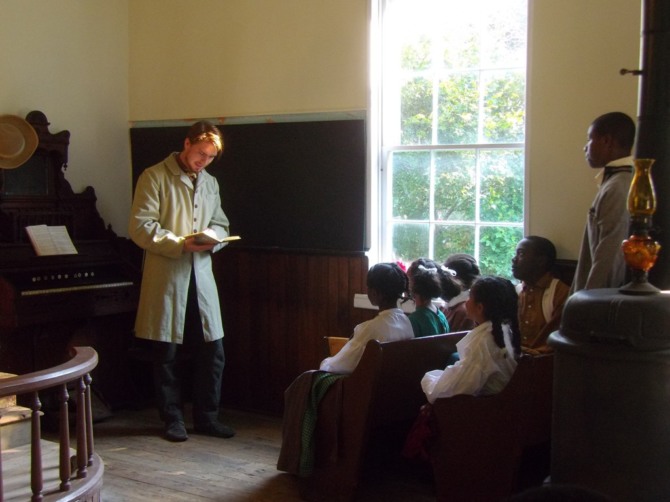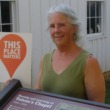Browse by Category
- All Categories
- 150th Anniversary
- Frederick County
- State Parks
- National Park Service
- Antietam
- Washington County
- Newcomer House
- 1865
- Literature
- Recreation
- Living History
- Museums
- Carroll County
- Historic Preservation
- Food/Dining
- Civil War Trails
- African American History
- Transportation
- Main Streets
- Education
- Women's History
- Geotrail
Bugle Call
Tolson’s Chapel: A Place of Perseverance and Triumph
September 1, 2015

Most people are familiar with the Battle of Antietam (or Battle of Sharpsburg). Many are aware that President Lincoln issued the preliminary Emancipation Proclamation in September 1862 following the Union “victory” at Antietam, freeing the slaves in the states in rebellion.
But did you know that the Emancipation Proclamation did not apply to the slaves who lived in Maryland? Maryland slaves were not freed until November 1, 1864 when a new Maryland Constitution went into effect, more than a year after the Emancipation Proclamation that became the law of the land on January 1, 1863.
Jeremiah Summers and Hilary Watson were both enslaved on Antietam farms during the Civil War. Summers and Watson were members of the Tolson’s Chapel congregation in Sharpsburg, and are buried in the cemetery behind the chapel.
Tolson’s Chapel was built in 1866 by the free and newly emancipated African American community in and around Sharpsburg. Their stories reveal the transition from slavery to freedom and the resulting growth of community institutions such as the church and the school.
While Tolson’s Chapel was dedicated to worship as a Methodist Church, it served double duty as a school beginning in 1868 with the aid of the Freedmen’s Bureau. Christened the “American Union” school, it continued in the chapel until 1870 when Congress dismantled the Freedmen’s Bureau education department. In 1872, Washington County began appointing teachers to teach in the Sharpsburg Colored School, and which remained in the chapel through 1898.
James F. Simons was appointed to teach at the school when he was just twenty years old, in 1879. Simons was the son of one of the original church trustees David B. Simons. James Simons would have been nine years old in 1868, so he was almost certainly one of the students in the American Union Freedmen’s Bureau school. During his tenure as teacher, Simons taught multiple subjects, including history, spelling, and arithmetic. His school books are now part of the Tolson’s Chapel collection. In 1899, Washington County constructed a new school building (now a private home) on the end of High Street for Sharpsburg’s African American children. James Simons continued teaching in the new building. He died in 1911 at the age of 51 and was buried in the Tolson’s Chapel cemetery.
Tolson’s Chapel is full of stories of perseverance and triumph, an inspiring beacon of light on the back street in Sharpsburg.
Tolson’s Chapel is located on East High Street in Sharpsburg, just a few minutes from Antietam National Battlefield. Stop by anytime to walk the cemetery grounds and read a new interpretive panel about this community institution. See the Friends of Tolson’s Chapel website for a listing of special events.
Photos (from top): Inside the chapel; 1922 photo of Jerry Summers, courtesy Doug Bast; gravestone of Hilary Watson, courtesy Friends of Tolson's Chapel; James F. Simmons; a textbook from the collection.
